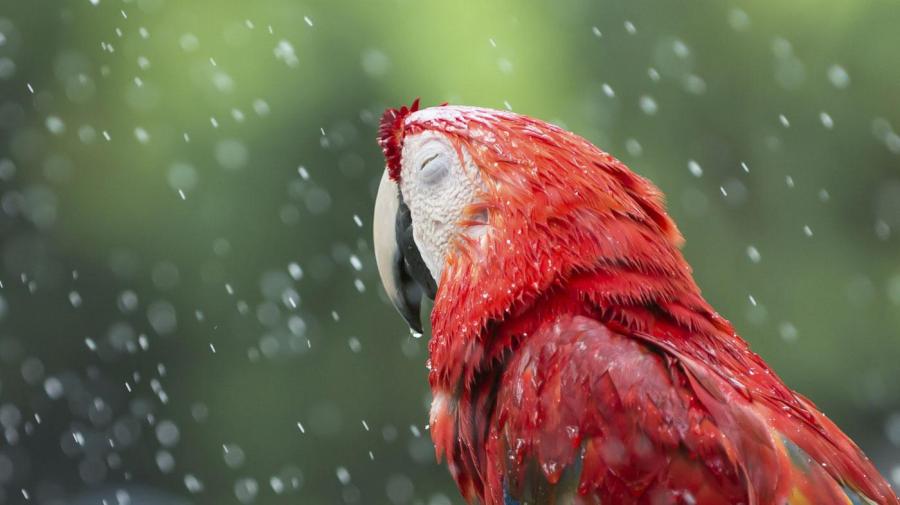Where Do Birds Go When It Rains?

When rain arrives, most birds wait out the elements and rely on their water-repellent coats to help them do so. Birds, along with other warm-blooded animals, need to keep their body temperatures within a certain range to avoid becoming hypothermic. Birds have special fur or feathers that help to repel water, which keeps birds warm and dry.
The water-repellent properties of birds’ coats essentially give them raincoats that help prevent them from being wet and cold. When rain hits the surface of the feathers or coat, it simply rolls off the surface without being absorbed into the skin, which can be dangerously chilling for birds.
To enhance the water-repelling capacities of their raincoats, many birds also have the unique ability to preen their coats with a layer of water-resistant oil. When rain arrives, birds tuck their bills into oil glands located near the base of their tails. These glands produce special oils that birds gather on their beaks then spread onto their coats. The oils produce a slick layer that prevents water from penetrating the surface of the feathers.
Some birds also have protection from rain in the form of soft downy fur, which serves the purpose of retaining body heat and keeps birds warm. Birds also have a third eyelid under their regular eyelids known as the nictitating membrane, which is used to protect their eyes while flying in the rain.





